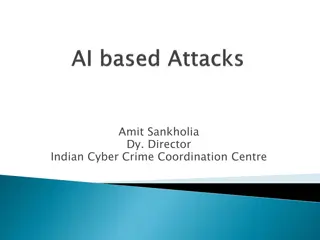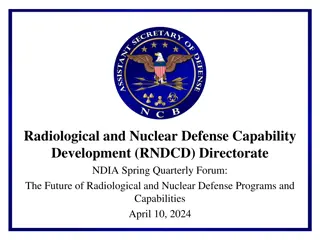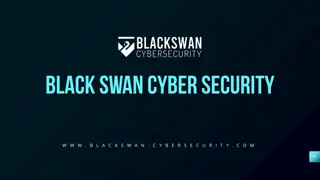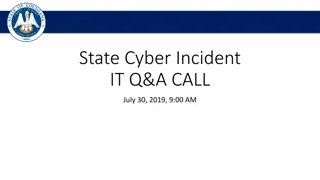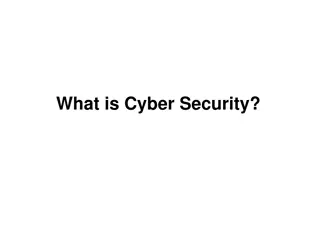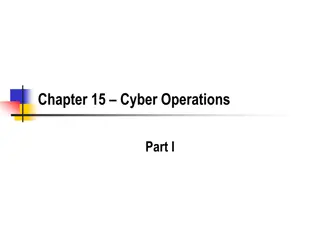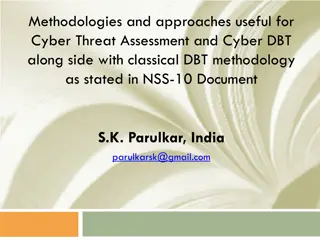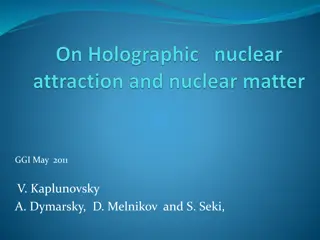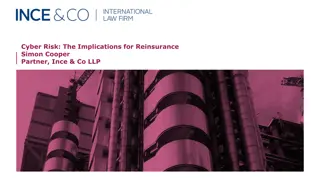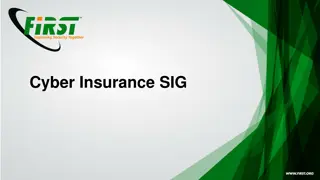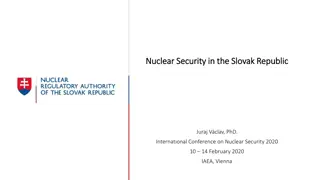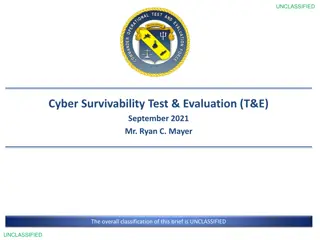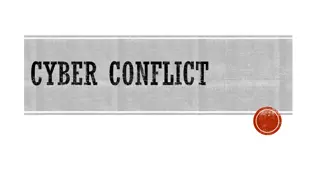Cyber Threat to Nuclear Facilities: A Critical Analysis
Cyber attacks on nuclear facilities pose significant risks, with potential devastating consequences highlighted by past incidents like Stuxnet. Lack of cybersecurity regulations in many countries with nuclear materials heightens vulnerability. The evolving threat landscape, technical vulnerabilities, insufficient response capability, and human capacity constraints further exacerbate the risk. Urgent actions are needed to secure critical infrastructure against cyber threats.
Download Presentation

Please find below an Image/Link to download the presentation.
The content on the website is provided AS IS for your information and personal use only. It may not be sold, licensed, or shared on other websites without obtaining consent from the author. Download presentation by click this link. If you encounter any issues during the download, it is possible that the publisher has removed the file from their server.
E N D
Presentation Transcript
HITTING THE SNOOZE HITTING THE SNOOZE BUTTON ON NUCLEAR BUTTON ON NUCLEAR SECURITY: SECURITY: The Cyber Threat to Nuclear The Cyber Threat to Nuclear Facilities Facilities Alexandra Van Dine Program Associate, Scientific and Technical Affairs Nuclear Threat Initiative vandine@nti.org (202)454-7758
A cyber attack on a nuclear A cyber attack on a nuclear facility could have devastating facility could have devastating consequences consequences 2
Cyber attacks on critical infrastructure Cyber attacks on critical infrastructure are not unprecedented are not unprecedented
Stuxnet Stuxnet: A Case Study : A Case Study Precision cyber weapon targeted on Natanz, an Iranian uranium enrichment facility Air-gapped, secret until 2002 Impacted Siemens programmable logic controllers specifically Physically affected and damaged spinning centrifuges
But I dont have an But I don t have an illegal nuclear illegal nuclear weapons program weapons program why should why should I care? I care?
Its not just Iran It s not just Iran Takeaway: 20 of 47 countries with weapons- usable nuclear materials or significant nuclear facilities have zero regulations requiring zero regulations requiring cybersecurity at nuclear facilities cybersecurity at nuclear facilities
TARGET INTENT WEAPON Bottom Line: in the future, a less secure, higher-consequence facility could be attacked by an adversary intending to cause harm with a far less discriminate weapon.
Cyber threat exacerbated by Cyber threat exacerbated by several factors several factors TECHNICAL VULNERABILITIES INSUFFICIENT RESPONSE CAPABILITY LACK OF HUMAN CAPACITY CURRENT STATE OF AFFAIRS
What is preventing What is preventing progress? progress? Complexity of Digital/Physical Systems Uneven Distribution of Limited Human Capacity Compliance Mindset Bureaucratic Inertia Bridging Technical/Policy Language Gap Cost
How can we move forward? How can we move forward? Improve response capabilities at home and abroad Build global human capacity in this area Rethink existing principles and best practices Consider disruptive technological solutions
Has Stuxnet motivated any reforms in facility security? Some recent movement on regulations Not necessarily a product of Stuxnet Implementation not yet adequate Relevant areas not always covered (e.g. nuclear materials accounting) Facility security measures have not kept pace with the threat Laptops, flash drives Digital systems Inadeqate security measures (e.g., firewalls, airgaps, antivirus) Outdated safety analyses
A variety of nuclear systems are vulnerable to cyber attacks with physical consequences Physical Protection Theft Sabotage Power Generation Sabotage Radiation release Fuel Processing Theft Sabotage Materials Accountancy Theft Diversion 14
NTI Index Cyber Indicators 2.6 Cybersecurity Nuclear materials and facilities are vulnerable to cyber attacks as well as physical attacks. Therefore, cybersecurity is a critical component to protecting against theft. 2.6.1Mandatory cybersecurity Requiring nuclear facilities to have protection from a cyber attack increases the likelihood that nuclear facilities will take measures to protect against cyber attacks. Do domestic laws, regulations, or licensing requirements require nuclear facilities to have protection from a cyber attack? - No or information not publicly available - Yes 2.6.2 Critical digital asset protection Requiring protection of critical digital assets against cyber attacks decreases the chance that an attacker can circumvent physical protection, control and accounting, and safety systems. Do domestic laws, regulations, or licensing requirements require nuclear facilities to protect critical digital assets from cyber attack? -No or information not publicly available -Yes 2.6.3 Cybersecurity DBT Requiring that the Design Basis Threat take into account the potential for cyber attacks increases the likelihood that nuclear facilities will consider cyber attacks when designing their security plans. Does the state consider cyber threats in its threat assessment or Design Basis Threat (DBT) for nuclear facilities? -No or information not publicly available -Yes 2.6.4 Cybersecurity assessments Required demonstration of performance, along with tests and assessments, improves effectiveness of and identifies weaknesses in cybersecurity measures. Does the regulator require a performance- based program, which includes tests and assessments of cybersecurity at nuclear facilities? -No or information not publicly available -Yes
Nuclear reactors planned, proposed, under construction
NTI Engagement National laboratories Regulators (U.S. & Int l) Operators IAEA Academia Silicon Valley


